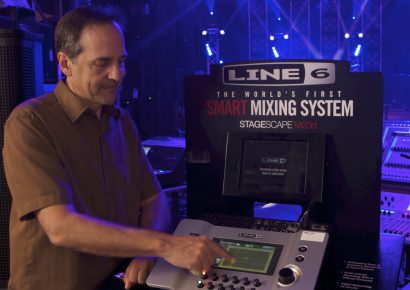Tell us about the history of the RalBar™.
Just over 10 years ago, after many years as a dentist and many more as an intermediate level guitarist, I thought I could transfer the manual skills I had from my work to building guitars. I quickly found that teeth and timber are very different and with the help of a master luthier, developed the skills for electric guitar building and design. A few years later I was lucky to work with Chris Wynne from Thomas Llloyd School of Acoustic Guitar Building at the Montsalvat artist colony, where I learned the practical skills and understanding of acoustic guitar building.
Originally I had wanted to build one 6-string electric guitar with an original design called the ‘Lahav’ based on a teardrop/paisley shape. But once I got started, more and more design ideas started to come to me including acoustic guitars and electric bass guitars. Before long, I had hand-built over a half a dozen instruments and loved the creative outlet of my hobby.

What gave you the idea to come up with the RalBar™?
When my older son turned 6, I gave him his first real guitar. Like so many kids who see their favourite rock stars, he thought he could just pick it up and play it. After a lot of lessons and not much practicing he had lost motivation from the relatively steep learning curve to start playing songs that he wanted to play and sound impressive. A few years later in 2010, I was at the Melbourne Guitar Show with him and had an epiphany after seeing a stick dulcimer. This is an instrument that is supposed to be easy to play, but even with decades of guitar playing behind me, I found it challenging to find my way around the fretboard. Rather than dismissing it, my mind started thinking about what was missing that could make it easier to play, and give more versatility. That’s how the internationally patented fret layout and markings of the RalBar™ were born. The body design is a variation of my signature teardrop/paisley guitar body shape that started with that first guitar, adapted for the thinner neck (I should point out that my son now plays a six-string guitar and has designed and is building his own electric guitar: the GM-1 model).
What is the RalBar™ and who is it designed to be used by?
The RalBar™ is an easy to play guitar that takes minutes (not months) to learn to play the chords for 100’s of songs. It is designed for people who think that they don’t have musical skill or time to practice but would like to play guitar. We find that for a lot of children this gives an easy way to start learning, which encourages further development. And a large proportion of our customers are adults who have always wanted to play, but never found the time or opportunity to learn. The easy start means that new musicians can play and enjoy straight away, and once they realise that they can play an instrument, they can add more advanced techniques and keep that feeling of achievement and progress.
What’s the principle behind the RalBar™? How does it work?
The strings on the RalBar™ are tuned to a 5th chord, also known as a ‘power chord’. Power chords are missing the notes that make the chord either major or minor, which means they can be used in place of either. The edge of the fretboard is marked with Roman numerals for the chords, so you don’t need to learn chord names. It’s like painting-by-numbers for guitar. Because of the RalBar™ dulcimer-like fretting, if you put a finger in a wrong position it will autocorrect to the next note up in the key you’re playing, which means that improvised solos will always sound musically correct.

How do you play the RalBar™?
Thanks to the combination of tuning, fret layout and markings, you just need to place a finger across the fretboard (and for the I chord, all you need to do is strum). For instance, instead of learning a chord progression C, G, Am, F and having to know the chord shape and stretch your fingers to it, you just play the frets marked I, V, VI, IV. It’s easy to convert regular chords to RalBar™ number chords (known in musical theory as Relative Chords). On the website (www.dyskinguitars.com) there are demonstrations of how to do this, as well as a growing list of popular songs already converted.
Anything else you’d like to add?
Dyskin Guitars and the RalBar™ were featured on Network 10’s ‘Shark Tank’ last year, and the buzz that came from that meant that we had to double the number of RalBars™ brought in and around 80% of them were pre-sold even before they arrived. Our new shipment has arrived, with an extended selection of colours and now with RalBar™ specific tuners. Watch out very soon for our crowd-funding campaign to launch acoustic RalBar™. You’ll be able to pre-buy acoustic RalBars™ at a low introductory price as well as discounted electric RalBars™.
For more details on Dyskin Guitars, head to dyskinguitars.com. You can purchase the RalBar here.

